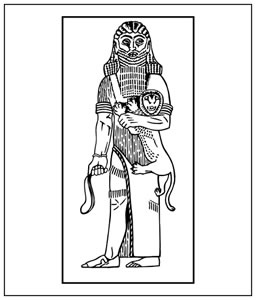6,000 Years Ago
 IT IS NOT SURPRISING that the first states arose about 6,000 years ago in Mesopotamia, in the area where farming began. The plaque is based on an Assyrian stone carving of King Gilgamesh, who ruled the city state of Uruk, around 2600 BC. He is also the central figure in one of the earliest surviving pieces of literature, the Myth of Gilgamesh.
IT IS NOT SURPRISING that the first states arose about 6,000 years ago in Mesopotamia, in the area where farming began. The plaque is based on an Assyrian stone carving of King Gilgamesh, who ruled the city state of Uruk, around 2600 BC. He is also the central figure in one of the earliest surviving pieces of literature, the Myth of Gilgamesh.
As societies became more complex, the expression of human spirit-uality also became more sophisticated. One of the earliest great religions was based on the teachings of Zoroaster, who lived in Iran, probably around 900 BC. In India, the Hindu traditions were emerging around the same time, followed by Buddhism around 600BC.
In the eastern Mediterranean, where Africa, Asia and Europe meet, a religion developed among the Jewish tribes, based on the idea of a single, all-powerful God. Into this tradition, 2,000 years ago, Jesus of Nazareth was born, and through his teaching, these ideas spread throughout the world. That is the subject of the final station.
CITIES AND STATES require a great deal of work in areas such as administration, public works and defence. This level of complexity of society can only happen where farmers can produce enough food beyond their own immediate needs to feed such specialist workers. In Mesopotamia, the production of agricultural surplus required complex irrigation systems to control the water of the great rivers.
The level of social co-operation in achieving this may in itself have encouraged the development of towns and cities, and ultimately of states.